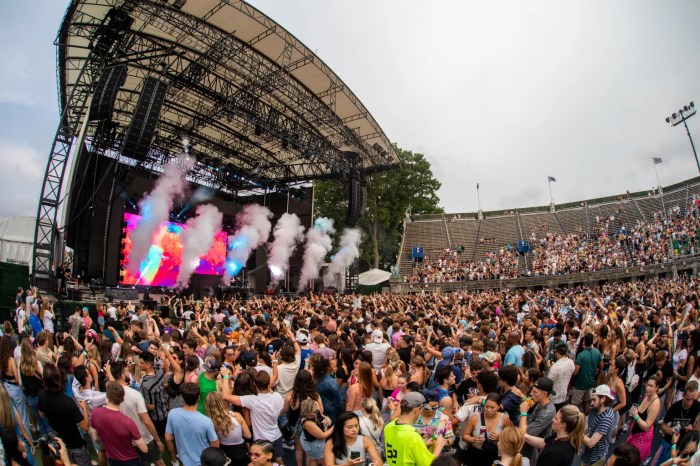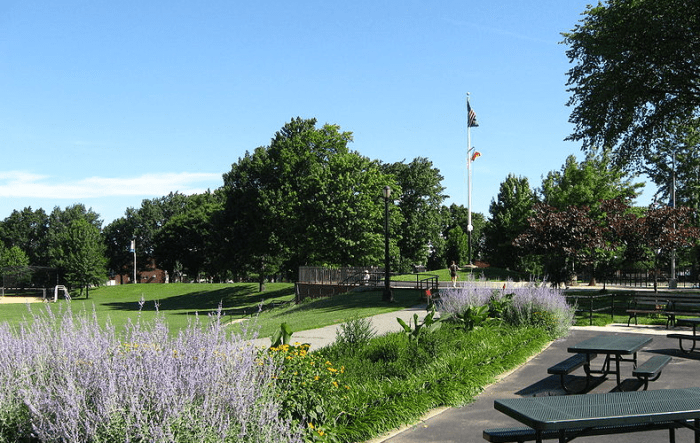By Alex Palmer
This weekend the Noguchi Museum will close up its current exhibit and hold its final Music in the Garden session for the summer. But at this space, dedicated to the work of 20th century artist and designer Isamu Noguchi, the end of one season promises the beginning of a new set of rich programming and explorations of the sculptor’s work.
The Noguchi Museum, 9-01 33rd Road in Long Island City, manages the world’s largest and most extensive collection of Noguchi’s work as well as his complete archives. The Long Island City space itself was designed by the artist to present his works in sculpture, paper and architecture as well as designs for furniture, lighting, landscapes and theater.
Music in the Garden, which takes place the second Sunday of every month from June to September, will be closing out the season with a performance by classical guitarist Gyan Riley. Hosted in collaboration with Bang on a Can, the event allows visitors to experience Noguchi’s garden design work, which included parks and plazas around the world from Detroit to Tokyo.
“Late in his career he put a focus on the gardens, and the sculpting of spaces, as he called it,” says Amy Hau, director of administration for the Noguchi Museum. “It’s very much at the heart of the institution.”
Those who visit the museum for the final performance will also be able to catch the last day of the Highlights from the Collection exhibition. Every summer the museum features different aspects of Noguchi’s life and work, and this year it put the focus on his pieces that used metal materials.
“It looks at different types of metals and techniques, whether cast metal, sheets of metal, or pieces soldered into all different shapes,” says Hau. “We really hauled some gems out of storage.”
But beginning in the fall, a much wider range of materials will be on view for the new exhibition, “Hammer, Chisel, Drill: Noguchi’s Studio Practice.” Opening Oct. 3, the show explores Noguchi’s working methods through a variety of hand and industrial tools.
“Thematically we look at all the handtools and machine tools and really open up the idea of different studio practices from different periods in his life,” says Hau.
The exhibit will feature a variety of photographs, film footage, and select sculptures that will help shed light on how the sculptor approached his work. The show tracks his career from the 1940s through the 1980s (he died in 1988), and in particular, it will look at how place shaped his materials and style.
In addition to his Long Island City studio, which sits across the street from the museum as well as a workspace in Manhattan, Noguchi worked in Querceta and Pietrasanta, Italy and Kanagawa prefecture and Mure, Japan.
“He traveled widely, and in different places where he traveled he would set up a studio, whether temporary or permanent, and was always in the studio making art,” says Hau. “It’s looking at all the different locations where he worked — whether Japan or Italy — and looking at all the different works he produced in the different studios, the availability of different materials.”
She gives the example of how Noguchi’s work in Italy emphasizes stone carving, while in Japan it was ceramics.
Beyond “Hammer, Chisel, Drill,” the museum will be extending its First Fridays through the rest of the year, expanding hours to 8 p.m. in the evening on the first Friday of the month, with a pay-what-you-wish admission policy and cash bar serving beer and wine starting at 5:30 p.m. For these evenings, different design films will be screened as well.
The museum will also continue its Second Sundays series, bringing together experts in art, architecture and design to discuss a range of topics related to the exhibit and Noguchi’s work in general. October’s Second Sunday event will feature a curator’s talk about the exhibit and the next month the museum will begin a weekend-long program that will also bring in current artists inspired by Noguchi or working in similar styles.
“It’s our version of an artist in residence — they do a talk and demonstration about their work, their use of tools, and how Noguchi may have used similar tools,” says Hau. “It’s quite a process because we’re really looking at Noguchi for inspiration, the type of work he did, and trying to bridge that gap between contemporary art and more traditional techniques.”
If You Go
Noguchi Museum
9-01 33rd Road at Vernon Blvd.
Long Island City
(718) 721-2308
noguchi.org




































